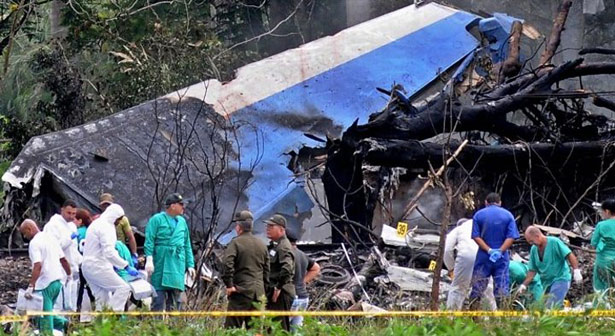HAVANA, May 20, 2018 (BSS/XINHUA) — Cuba confirmed here on Saturday that 110 people were dead from Friday’s Boeing 737 crash close to Havana’s Jose Marti International Airport.
Transportation Minister Adel Yzquierdo told a press conference that of the 110 dead, 99 were Cubans, 11 foreigners including six Mexican crew members, two Argentines, one Mexican and two temporary foreign residents.
The three survivors, identified as Mailen Diaz, 19, Gretell Landrovell, 23, and Emiley Sanchez, 39, are still in critical condition.
FOLLOW-UP WORK UNDERWAY
An identification process of the victims and an investigation into the accident have been underway, according to local authorities.
So far, only 15 bodies have been identified, Yzquierdo said, adding officials were working intensively to identify the rest of the victims, whose remains were transferred to the Institute of Legal Medicine in Havana.
“Conditions have been created for complex procedures of identifying bodies so that family members can do so smoothly and we can provide that service in a faster way,” said Cuban President Miguel Diaz-Canel.
One of the plane’s two black boxes has been recovered in good condition, specifically the one with the voice recordings. Investigators continue to sift through the rubble for the second black box containing flight data, Yzquierdo said.
Representatives of the aircraft’s manufacturer are arriving to help in the investigations, as are international experts, to determine what caused the crash.
The aircraft leased by Cubana Airlines from the Mexican company Damojh crashed a little past noon on Friday, minutes after taking off from Terminal 1 of Havana’s Jose Marti International Airport.
Built in 1979, the plane passed its last inspection in November 2017, Mexican officials said.
“HUMAN SOLIDARITY” AMID NATIONAL DISASTER
The Cuban president said there has been “human solidarity” from state institutions, workers and the people amid the national disaster.
Diaz-Canel, who immediately arrived at the accident site on Friday, started his visits on Saturday at the institute and later moved on to the Calixto Garcia University Hospital to meet the three survivors of the crash.
A multidisciplinary team has been created with psychologists, psychiatrists, doctors, and government officials to systematically provide information to the victims’ families, said Diaz-Canel.
The Cuban government declared two days of mourning from 6:00 a.m. (1000 GMT) on Saturday to Sunday midnight, with flags flying at half mast on Saturday.
FAMILIES MOURN THEIR LOVED ONES
Outside the Institute of Legal Medicine in Havana, where the remains were being taken for identification by the victims’ families and relatives who were coming to terms with the sudden loss of their loved ones.
“We were at the airport waiting for her, longing to see her after a year of being apart, and she was also longing to see me, my nine-year-old son, my brother, everyone,” said Leonardo Martinez, whose mother Luz Marina Miranda died in the crash.
Amalia Santiesteban, a close friend of a victim as yet unidentified, lamented what happened and said, “There has been full national attention. The government took care of the affected families in Holguin and met all their needs.”
Friday’s crash was Cuba’s third major accident since 2010 and its worst air disaster in decades.
In November 2010, an AeroCaribbean flight from Santiago to Havana went down as it flew over central Cuba, killing 68 people, including 28 foreigners.



